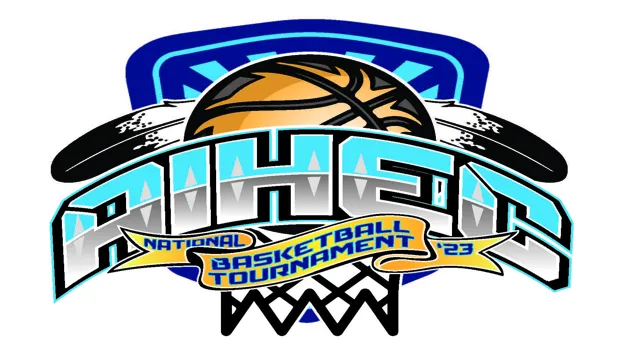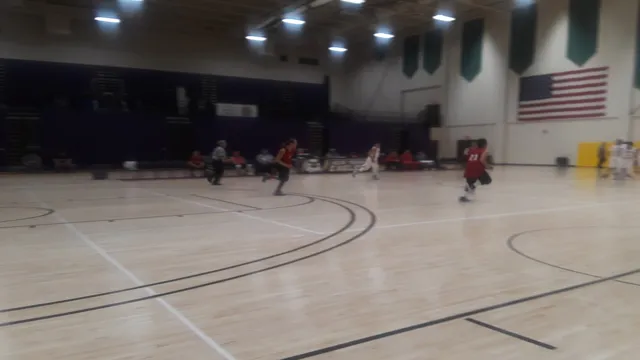Looking to learn about AIHEC basketball? You’re in the right place. This ultimate guide will delve into the history of the AIHEC (American Indian Higher Education Consortium) basketball tournament, its significance in Native American culture, and everything you need to know about this thrilling event. Whether you’re a die-hard fan or just learning about AIHEC basketball for the first time, this guide will provide you with all the details you need to become an expert on the topic.
So, grab a seat, and let’s explore the world of AIHEC basketball together.
History and Background
AIHEC basketball, or the annual basketball tournament hosted by the American Indian Higher Education Consortium, has a rich history and cultural significance for Native American communities. The tournament began in 1981 as a way for tribal colleges and universities to come together and compete in a sport that has become beloved by Native American communities across the country. For many, basketball represents more than just a game; it is also a symbol of resilience and perseverance in the face of adversity.
Over the years, the tournament has grown in popularity and now attracts teams from all over the United States. In addition to the games themselves, the tournament also features cultural events and ceremonies that celebrate the diversity and heritage of Native American communities. The AIHEC basketball tournament is a cherished tradition and an important part of Native American culture, and its continued success is a testament to the dedication and passion of the players and communities that participate.
Origins of AIHEC Basketball
The origins of AIHEC basketball can be traced back to the 1970s when tribal colleges and universities began forming their own basketball teams. These teams would compete against each other, but there was no official championship. In the early 1980s, the American Indian Higher Education Consortium (AIHEC) recognized the need for a basketball tournament to showcase the talented athletes and promote Native American culture.
The first AIHEC basketball tournament was held in 1983, and since then, it has become an annual tradition bringing together tribal colleges and universities from all over the country. The tournament not only highlights the athletic abilities of Native American students but also celebrates their cultural traditions, providing a platform for promoting unity and pride in their heritage. As the tournament has grown in popularity, it has attracted more attention from scouts and coaches, leading to opportunities for student-athletes to further their basketball careers.
Today, the AIHEC basketball tournament is known as one of the most competitive Native American collegiate basketball tournaments, and it continues to serve as a beacon of Native American culture and pride.

Growth and Development Over the Years
The growth and development of various sectors over the years have been remarkable, and it is interesting to explore the history and background that have shaped them. As time passes, technological advancements have played a major role in the development of various industries, leading to major shifts and trends in the global economy. With the advent of new innovations such as the internet and social media, many industries have experienced rapid growth, including the tech industry, hospitality, logistics, and transportation.
The rise and fall of various industries have also been influenced by external factors such as political, economic, and social changes, as well as natural phenomena like climate change, natural disasters, and pandemics. Overall, the evolution of different sectors is influenced by a complex web of factors that are intertwined, making it crucial to keep track of all the changes as they occur to better understand the intricacies of the industry and adapt to the ever-changing market trends.
Rules and Format
If you’re a fan of college basketball, you may have heard of AIHEC Basketball. AIHEC stands for the American Indian Higher Education Consortium, and the organization is a group of 37 tribal colleges and universities. Each year, these institutions come together for the AIHEC Basketball Championships.
The rules and format are relatively similar to other college basketball tournaments, with a bracket-style competition. However, there are a few key differences. Firstly, the championship is only open to tribal colleges and universities.
Additionally, the teams are made up of only Native American players. Many Native American communities have a rich history of basketball, and the AIHEC Basketball Championships provide an opportunity for these players to showcase their talents on a national stage. Overall, the tournament is a celebration of Native American culture and achievement through the sport of basketball.
Scoring and Time Regulations
When it comes to basketball games, the scoring and time regulations are crucial to keep the game fair and exciting. Typically, the length of a basketball game may vary depending on the level of play. For instance, a high school basketball game runs for 32 minutes, while college and professional games last for 40 minutes.
Each game is divided into two halves with a 15-minute break in between. In terms of scoring, a basket counts for two or three points. Free throws, on the other hand, are worth one point.
Once the ball goes out of bounds, the possession of the ball is awarded to the opposing team. The gameclock stops during timeouts, fouls, and referee reviews. It is essential to pay attention to the time not only to manage it but also to make wise decisions in-game situations.
In summary, scoring and time regulations play a significant role in determining the outcome of a game, and keeping a close eye on them is key to success on the court.
Fouls and Penalties
When it comes to basketball, fouls and their corresponding penalties can greatly affect the flow and outcome of the game. There are various types of fouls that players can commit, such as personal and technical fouls. Personal fouls are committed when a player makes contact with an opposing player, such as pushing or hitting them, with the intention of hindering their progress or causing harm.
Technical fouls, on the other hand, are given for unsportsmanlike conduct, such as arguing with the referee or using vulgar language on the court. Each foul results in a penalty, such as awarding free throws to the opposing team or forfeiting possession of the ball. It’s crucial for players to understand the different types of fouls and their penalties in order to play cleanly and avoid costly mistakes.
Team Rosters and Positions
When it comes to team rosters and positions in any sport, there are specific rules and formats that must be followed. In most team sports, such as basketball, soccer, and volleyball, there are a set number of players allowed on the court or field at any given time. Each position has its unique role to play, and every player must work together to achieve the common goal of winning the game.
A team’s success depends largely on the coach’s ability to assign players to the right positions and utilize their strengths to their fullest potential. This process involves analyzing each player’s skills, understanding their strengths and weaknesses, and determining how they can best contribute to the team. By following the rules and formats set in place, teams can create a cohesive and effective game plan, leading them to victory.
Championships and Awards
AIHEC basketball has gained immense popularity over the years, with many colleges and universities participating in the annual event. The American Indian Higher Education Consortium holds a national basketball tournament where teams from tribal colleges and universities compete for the championship title. The championships are always eagerly awaited and are known to draw large crowds of students, faculty, and alumni.
The tournament has produced some outstanding players, and many have gone on to play at the professional level. To recognize their individual achievements, the AIHEC basketball team awards players with honors such as most valuable player, top scorer, and all-tournament team. These accolades are given to talented players who display exceptional skills and sportsmanship throughout the tournament.
AIHEC basketball has become an important platform for tribal college athletes to showcase their talents and bring their tribes and communities together.
List of Past Champions
As we look back at the history of various championships and awards, we come across an impressive list of past champions who have etched their names in the annals of sports history. Whether it’s the Super Bowl, the NBA Championship, the Stanley Cup or the FIFA World Cup – each competition has had its fair share of iconic winners who have left a lasting impact on their respective sports. These champions embody the pinnacle of excellence and inspire generations of fans with their grit, determination, and sportsmanship.
From legendary athletes like Michael Jordan and Muhammad Ali to modern-day stars like Tom Brady and Messi, the list of past champions is a testament to the unstoppable spirit of human achievement. So let’s take a moment to appreciate all those who have reached the summit of their sport and inspired us to chase our own dreams of greatness.
Individual Awards and Recognition
When it comes to individual sports, the athletes’ successes are often celebrated through championships and awards. Winning a championship or receiving an award is a testament to an athlete’s hard work and dedication to their craft. These achievements also serve as motivation and a source of pride for the athlete’s team and fans.
The recognition can range from small local awards to international championships, but they all hold a special place in an athlete’s heart. Moreover, these awards often attract sponsorships, helping athletes build their brand and secure financial stability. All in all, championships and awards are a way for athletes to measure their progress and showcase their talent to the world, making them a significant part of any athlete’s journey.
The Future of AIHEC Basketball
As AIHEC basketball continues to gain popularity and recognition, the future of the sport looks promising and exciting. With more and more Tribal Colleges and Universities (TCUs) competing every year, it’s clear that the level of competition is rising. This increased competition has also brought about improvements in facilities, equipment, and coaching staff, all of which have led to a higher quality of play.
Furthermore, the continued support from fans and the community has created a strong fan base, which has helped to boost the profile of the sport. Given these positive developments, it’s no surprise that many are predicting a bright future for AIHEC basketball, with the potential for professional opportunities and even more national recognition in the years to come. As TCUs continue to invest in their programs and the competition continues to grow, we can expect to see some truly amazing things in the world of AIHEC basketball.
Conclusion
In conclusion, AIHEC basketball is not just a game, but a depiction of resilience, strength, and perseverance displayed by Native American athletes. It’s a platform where talent meets opportunity, where passion meets determination, where teamwork meets camaraderie, and where history meets the future. This is not just a sport, but a cultural expression that unites communities and celebrates the spirit of Indigenous peoples across the country.
As they say, “basketball is a game of inches,” and for these athletes, every inch is a step towards reclaiming their identity, their pride, and their rightful place in society. So, let’s keep cheering for our warriors on the court and off the court, for they truly embody the spirit of the game – a combination of skill, heart, and soul. “Hoka hey!”
FAQs
What is AIHEC basketball?
AIHEC basketball stands for the American Indian Higher Education Consortium basketball tournament, which is an annual basketball tournament featuring teams from tribal colleges and universities across the United States.
When was the first AIHEC basketball tournament held?
The first AIHEC basketball tournament was held in 1984.
Who can participate in the AIHEC basketball tournament?
Participation in the AIHEC basketball tournament is limited to teams from tribal colleges and universities that are members of the American Indian Higher Education Consortium.
How is the winner of the AIHEC basketball tournament determined?
The winner of the AIHEC basketball tournament is determined through a single-elimination tournament format, with the last team standing at the end of the tournament being declared the winner.


